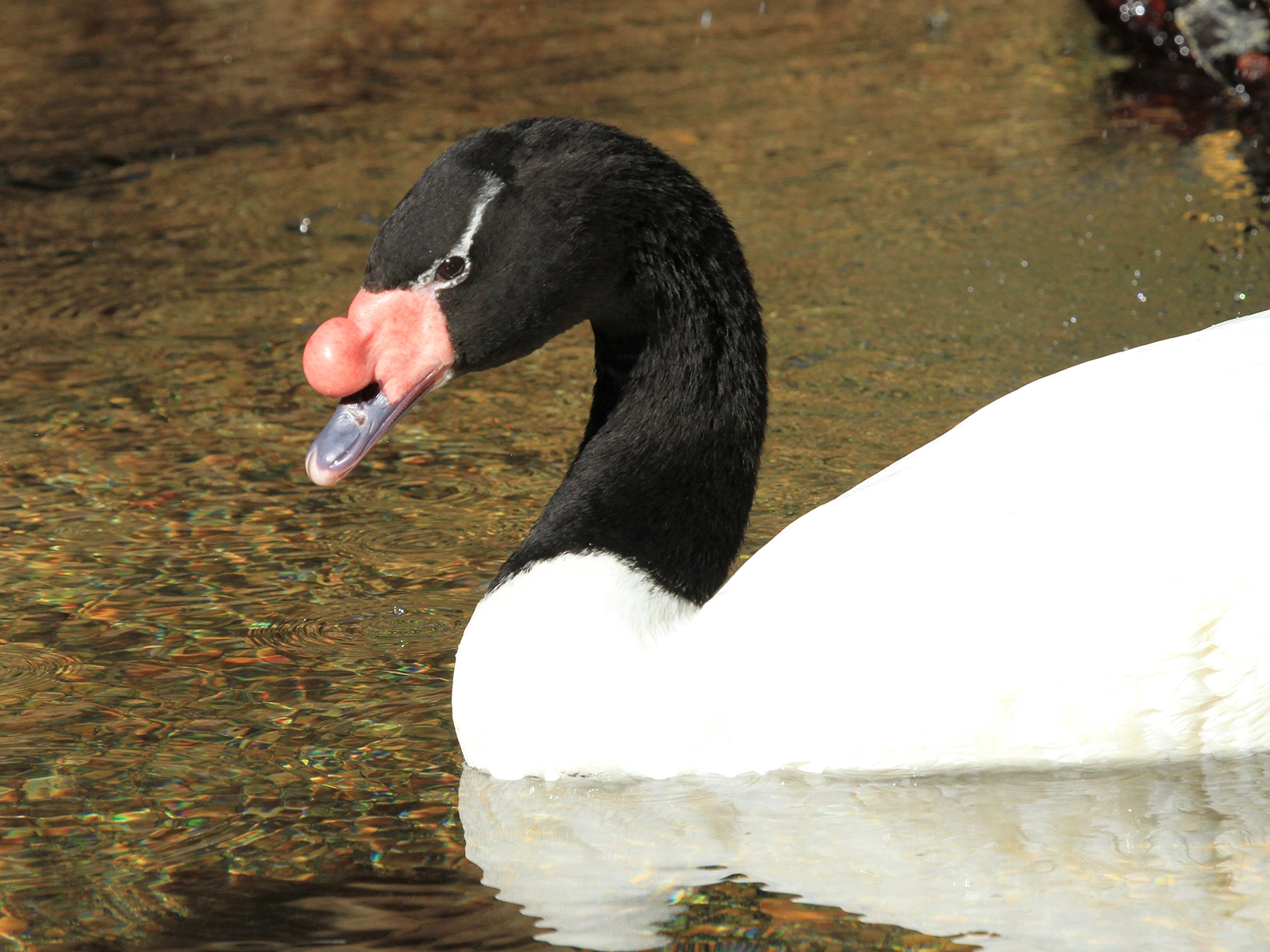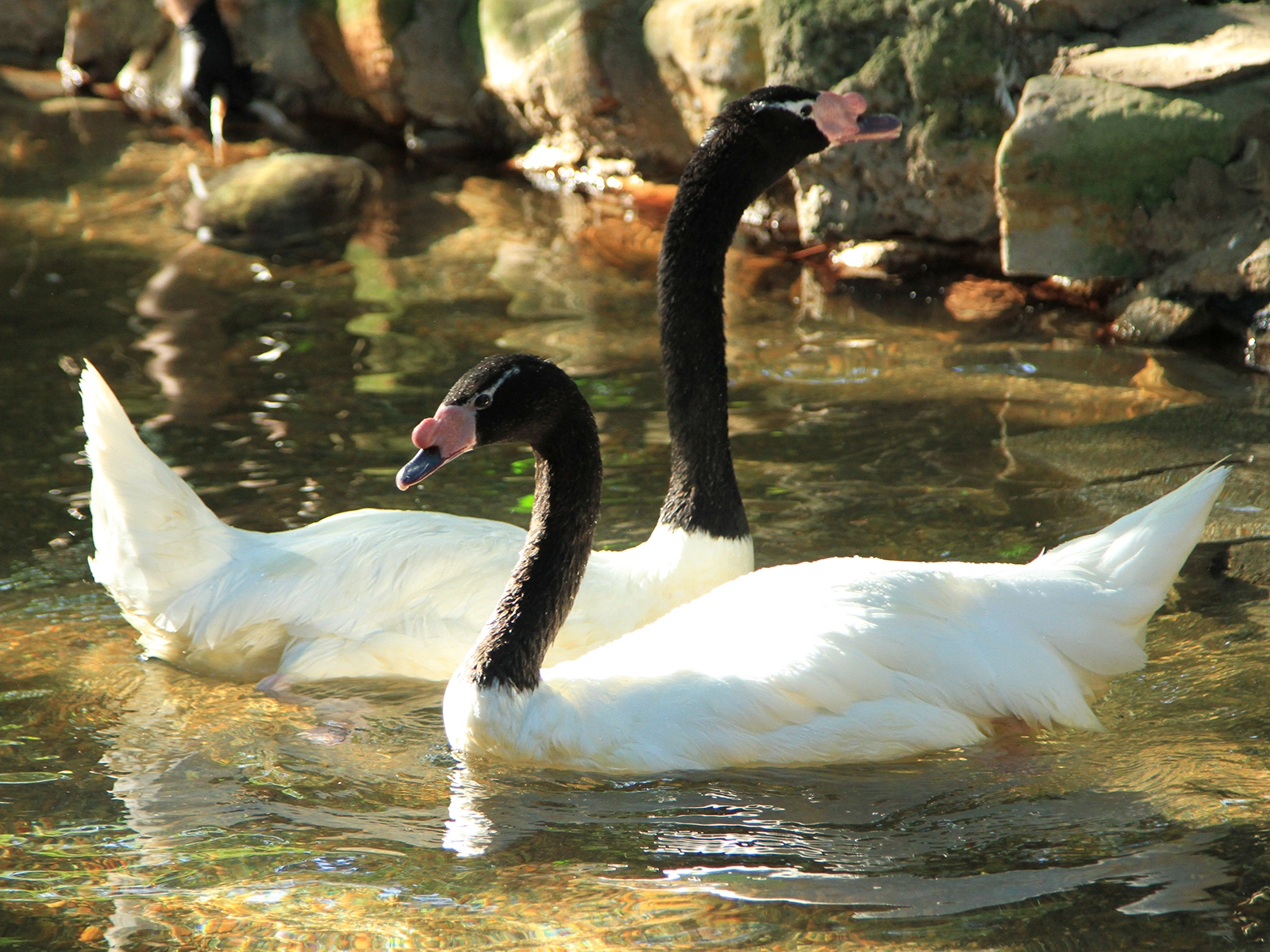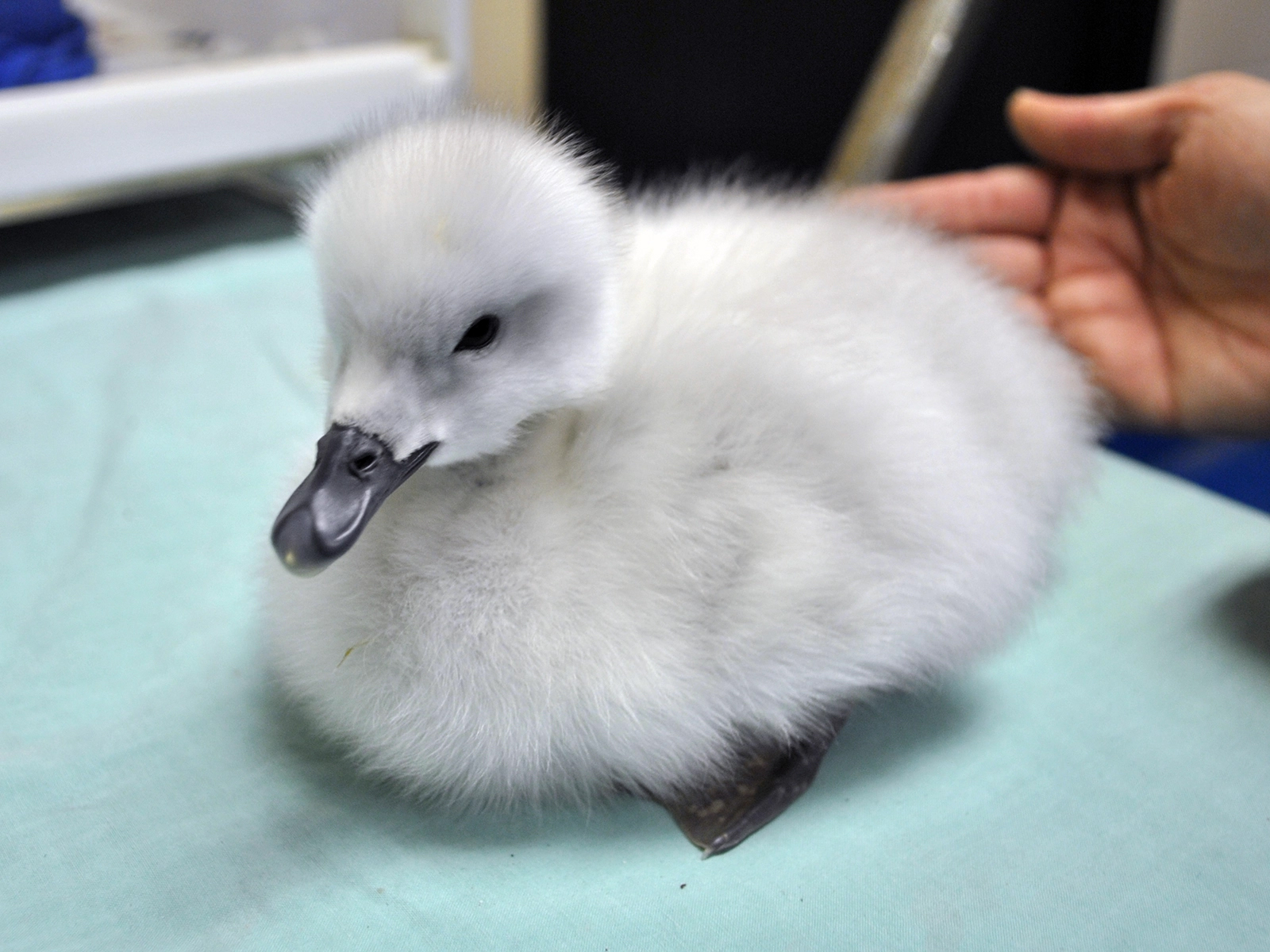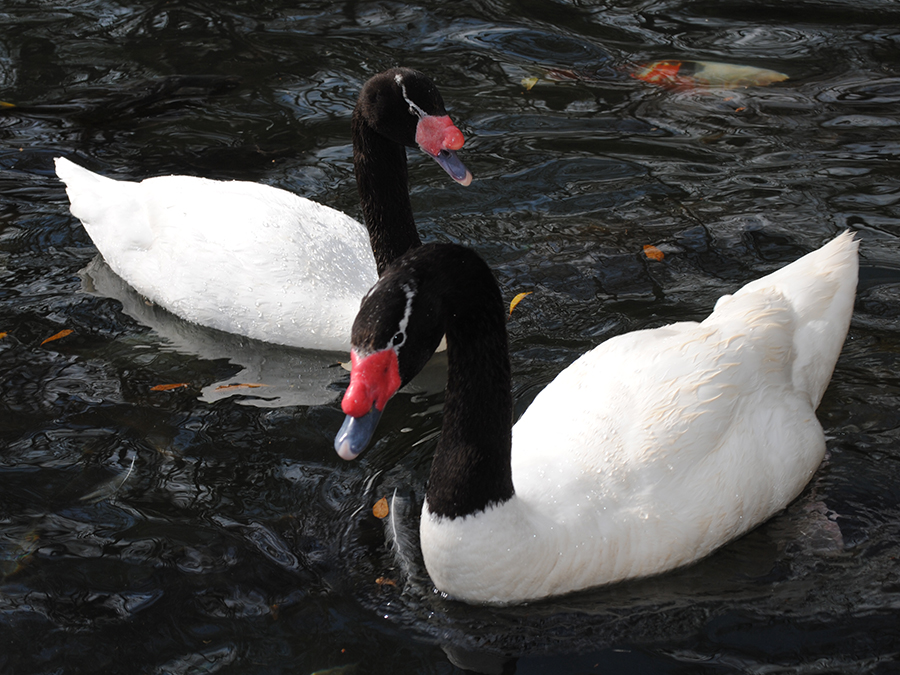Black-necked Swan
Cygnus melanocoryphus
Class
Aves
Order
Anseriformes
Family
Anatidae

Aves
Anseriformes
Anatidae
Falkland Islands and southern South America, including areas of Brazil, Bolivia, and Patagonia
Length: 40 - 55 in
Wingspan: 70 in
Weight: 8 - 15 lbs
Swamps, brackish lagoons, shallow lakes, and freshwater marshes
Clutch of 4 - 8 eggs
Incubation: 36 days
Pond weeds and algae, insects, small invertebrates, and fish spawn
Least Concern
They are one of the fastest fliers of the eight swan species, often reaching speeds of 50 miles per hour.

These birds spend most of their time in the water. They are excellent swimmers, but are awkward walkers on land. Their bill has special jagged edge that helps them tear through tough or slippery vegetation.

The male is referred to as the cob, the female as the pen, and the young are called cygnets. They are aggressive and very protective birds.

Common and widespread; not globally threatened. Habitat loss, including draining of many marsh and wetland areas, continues to be the largest threat to this species.